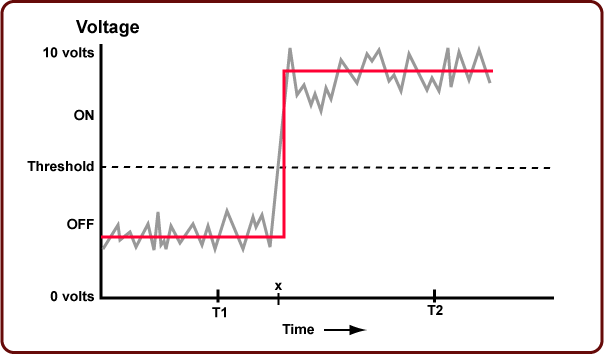Pioneers - Claude Shannon
The decision to use binary
Key Concepts |
|
Introduction
Claude Shannon (1916 - 2001) was an American mathematician, electrical engineer, and considered the father of Information Theory
As part of his master's thesis in 1937, Shannon expanded George Boole's Boolean Algebra to include switching logic, a set of mathematical tools to analyze and design circuits using algebraic operations. In his work, Shannon laid out the basis of digital circuit design and the use of binary as the underlying data elements of digital hardware
Life of Claude Shannon
Claude Shannon - April 30, 1916 to February 24, 2001
Key Elements of Binary
Technology was primarily analog-driven at the start of the 20th century. With electricity, voltage was used to represent information.
- A voltage above a certain level, say 10v, would be considered a high or on indication
- A voltage of zero (0) represents low or off
Because voltage exists in an infinite number of levels, it is an analog signal. In the above example, what value would 0.3v or 8.7v mean?
When voltage transitions from low to high it is not a smooth line on a graph

credit: Introduction to Computer Science using Java by Bradley Kjell (CC BY-NC 3.0)
Claude Shannon realized that existing information media, such as voltage in a wire, would not suit the incoming digital revolution. He recognized four (4) advantages of the binary number system that led to it's adoption into modern digital computers.
Simple
At its heart, binary values are simple. Digital circuits would be simple, needing to send/receive on and off signals.
A binary digit being either a 1 or 0 is just about as simple as a number system can be.
Unambiguous
Digital information needs to clearly be in one of the two simple states. In-between values would cause performance issues at best and degradation of information at worst.
Binary does not have values between 0 and 1. There is no 0.1 value in this system. This provides the exactness that digital information needs.
Flawless copies
Integrity of the data is a key goal of information theory. Data that cannot be transferred (copied from one storage device to another) reliably has little or no use.
Copying binary values can be performed with simple circuits and, if needed, is simple to verify.
Conclusion
Identifying binary as the data type for digital computer made the data simple, allowing for digital circuit to be fast.
Binary, by its nature, is unambiguous with only two (2) possible values.
Because Shannon was working on Information Theory, he insisted that digital data be flawlessly copied. Binary allowed simple circuits to move data easily and reliably.
